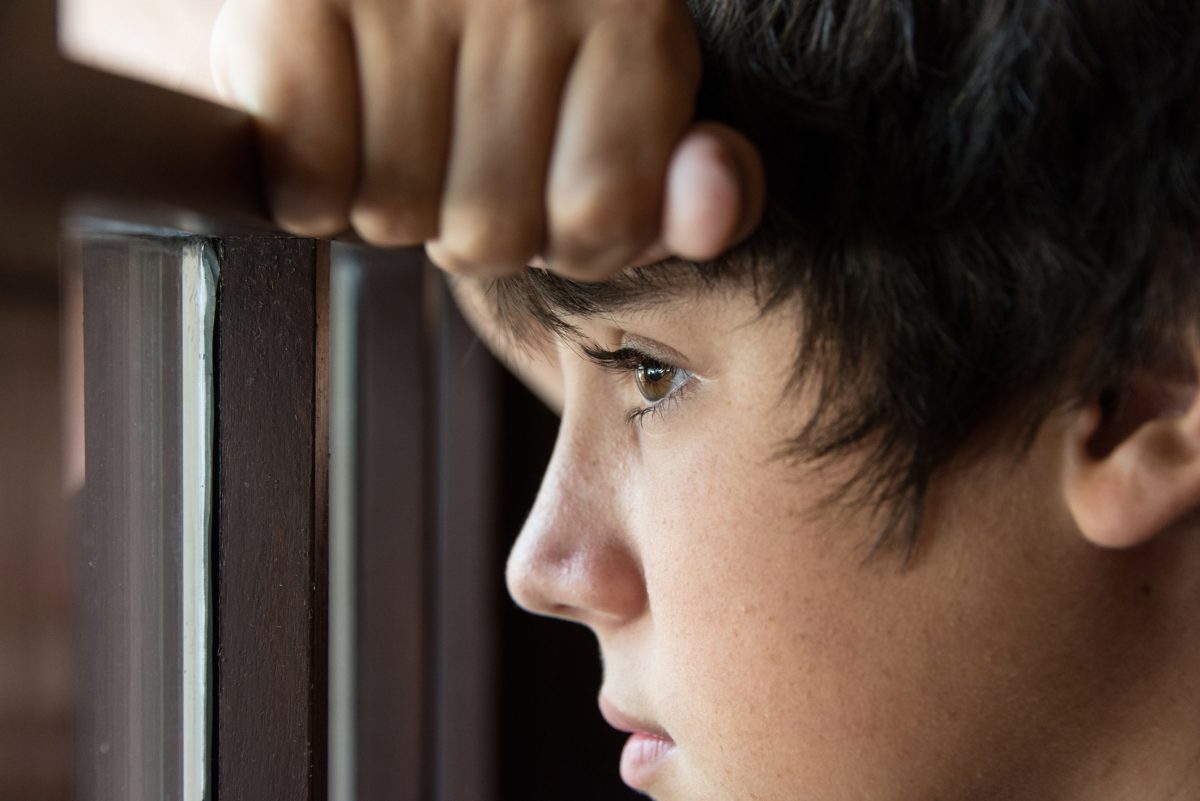Neurodevelopmental disorders are a class of mental and physical health conditions characterized by delayed or unmet developmental milestones and changes in the way a child’s brain develops in comparison to their peers. And while there are many conditions that fall under this umbrella, there are some common neurodevelopmental disorders, such as attention-deficit/hyperactivity disorder (ADHD), that are more recognizable.
When Can a Neurodevelopmental Disorder Impact a Teen?
Neurodevelopmental disorders can impact a child, teen, and adult in different ways over the years, depending on the type of condition they have and the severity of their symptoms.
Most neurodevelopmental disorders begin to affect a person early in their life, and some neurodevelopmental conditions can be diagnosed as early as a few years into a child’s development, depending on certain key signs and symptoms. Neurodevelopmental disorders are recognized under the Diagnostic and Statistical Manual of Mental Disorders (DSM-V), a diagnostics manual for mental disorders.
Other Mental Health Disorders vs. Neurodevelopmental Disorders
Neurodevelopmental disorders are somewhat unique in that they often blend the difference between a mental health issue and a physical health issue. In many instances, a neurodevelopmental disorder is a bit of both.
Many neurodevelopmental disorders begin in the womb or in the earliest childhood and are caused by inherent risk factors (such as genes) as well as environmental risks, from chemical exposure to severe stress.
Originating from Brain Development
All neurodevelopmental disorders can be traced to the brain’s development, unlike some other mental disorders.
While many mental health conditions are affected by brain health, research has shown us that some conditions, like anxiety or depression, are not necessarily strictly linked to differences in brain structure or brain chemistry, even though these can be contributing factors in some cases. In other words, some people are depressed because of an inherent genetic risk and a difference in the way their brain processes mood. Others struggle with their mental health symptoms due to a wealth of other conflating factors, from trauma to chronic stress.
Are Neurodevelopmental Disorders Physical?
Neurodevelopmental disorders help us better understand the way mental and physical disorders are ultimately tied together.
Even if some mental disorders don’t have a clear physical origin, there are both mental and physical symptoms to a condition like anxiety or depression.
Panic attacks and depression-related chronic pains are definite physical symptoms caused by mental health issues. Many people who seek treatment for a mental disorder need a treatment plan that addresses a system of co-occurring health problems, rather than a limited window of symptoms.
In that context, neurodevelopmental disorders are both physical and mental and may require a treatment plan that tackles both types of symptoms.
Common Neurodevelopmental Disorders
There are a few different ways in which a child’s brain can lag behind their peers and cause health issues. Here are some of the most common neurodevelopmental disorders.
1. Autism Spectrum Disorder (ASD)
Autism spectrum disorder is a diagnosis for a wide variety of symptoms. Any child diagnosed with autism will require a treatment plan tailored to their circumstances and symptoms.
Autism is characterized by difficulties with both verbal and non-verbal social cues, sensory overload, physical stimulation and fidgeting, and strange speech.
Specific symptoms and severity can differ wildly. Autism does not affect cognition or intelligence. In fact, some children and teens with autism have exceptionally good recollections and are hyper-focused on specific interests. There are no physical tests for autism, but a pediatrician and psychiatrist can diagnose autism in a child based on certain behavioral tests and developmental signs.
2. Attention-Deficit/Hyperactivity Disorder (ADHD)
ADHD is another common neurodevelopmental disorder, inhibiting executive functioning, motivation, attention, and mood control. ADHD often co-occurs with conditions like depression and anxiety, and symptoms differ in childhood versus adulthood.
Children with ADHD tend to fidget, struggle to pay attention, can be easily irritable, and may be inclined to follow their own interests exclusively. They may have normal or even above-average intelligence but cannot always direct their focus where it is needed. As adults, people with ADHD may learn to overcome many of their symptoms but may still struggle compared to peers with focus, motivation, and time management.
3. Cerebral Palsy
Cerebral palsy is a neurodevelopmental condition characterized by difficulty with physical coordination. Kids who develop cerebral palsy will often have normal intelligence but can struggle with speech, in addition to other basic tasks such as walking, eating, and bladder control.
There are different types and levels of severity, with corresponding levels of required support. There are no ways to reverse cerebral palsy, but there are therapies and tools to mitigate its effects – from strength training to specialized walking tools – and help teens gain as much independence as possible.
4. Neurodevelopmental Motor Disorders
Neurodevelopmental motor disorders also affect a child’s movement, but in different ways than cerebral palsy. While cerebral palsy specifically refers to a condition caused by some type of damage to the brain during development, neurodevelopmental motor disorders are characterized by involuntary movements and speech, also known as tics. These can be verbal tics as well as physical tics. A commonly known neurodevelopmental motor disorder is Tourettes.
5. Learning Disabilities
Learning disabilities range from dyslexia to dyscalculia and heavily affect a child’s capacity to understand and process information.
Children and teens with learning disabilities usually have the same level of intelligence as their peers but may be held back or struggle academically because they aren’t catered to and cannot learn the material at the same speed or in the same way as their friends. The most common learning disabilities center around reading, writing, and performing math.
6. Intellectual Disability
Intellectual disabilities may affect a child’s cognitive abilities, such as their ability to retain information, remember things, understand concepts, or solve problems.
Furthermore, intellectual disabilities differ in severity. Some children and teens are years behind their peers but can still develop to become independent in adulthood, especially with treatment. Others may require a legal guardian or conservatorship, even after they become adults, to make financial and medical decisions, as well as other key decisions.
Identifying and seeking treatment for an intellectual disability as early as possible can help a child develop, but their brain may be limited in its capacity to adapt. There are different causes of intellectual disabilities, including Down syndrome, fragile X syndrome, and viral infections.
Are Neurodevelopmental Disorders Treatable?
It is important to define treatable in the context of a neurodevelopmental disorder. Most of these conditions are lifelong, although they vary in severity to such a degree that a person can “outgrow” them.
In most cases, however, this simply means that a teen or adult learns to cope with the symptoms of their condition and appear neurotypical, even if they continue to be naturally disadvantaged in our neurotypical world when compared with their peers and have otherwise learned to compensate through behavioral and cognitive adaptation. Sometimes, this is due to treatment and training. Other times, it’s due to life experiences. Sadly, many other kids don’t cope as well and will continue to struggle with their disorder without the necessary help.
Some treatments can help children and teens become independent and lead long lives with normal levels of social and medical support. Other conditions may require lifelong support through friends and family. That does not make life any less worth living, even if it’s a different life than most people lead.
Children and teens with severe neurodevelopmental conditions can still learn to adapt to a significant degree and make progress over the years. They can see life through a lens most people never will and can even develop unique skills as a result of their circumstances.
Don’t Give Up
It’s important not to give up on someone with a neurodevelopmental condition. Their symptoms could improve, or they can learn to adapt to their circumstances in ways that weren’t anticipated. Kids have learned to do things with cerebral palsy that some doctors told them they would never do. And as time goes on, research into neurodevelopmental conditions continues to provide alternative treatments and potential future treatments to help older teens and adults adapt in new ways.
For more information about treatment for neurodevelopmental disorders in teens, visit Visions Treatment Centers.








